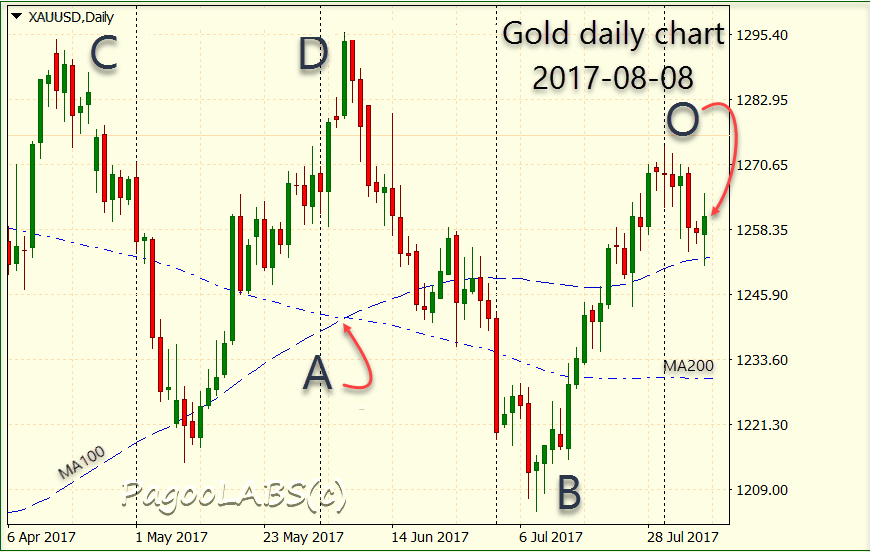Basic Trade Setup Part 1 - Introduction
A trade setup describes how to take a position in a market in order to profit from that market rising or falling. If for some reason (discussed later) you expect the market price to rise then you would open long by buying a number of contracts. If instead you expect the price to fall then you would open short by selling some contracts.
It may seem strange to sell first and buy later but it is just the symmetrical opposite of buying first and selling later. Short selling is also an important part of keeping futures markets liquid: how could you buy if someone else is not willing to sell? Also, a prime purpose of these derivative markets is to enable hedging and the offsetting of risks from other markets. Half the time that will require short selling.
For our purposes here, a trade setup is just a description of how you open that contract. It answers the following questions:
- What is the
open price? - Where is the
target price, the price where you will automatically close out your position for a win? - Where is the
stop loss, the price where you will automatically close out your position for a loss? - How many
contracts? - What is the
marginyour broker requires from you to open and maintain your position?
When you have finished this series of stories you will know how to only risk a specific percentage of your funds in each trade and how to calculate the number of contracts you need to do so. The material we discuss here is fairly basic, however it assumes a level of knowledge about charts, trading software and jargon that may be unfamiliar. Do not be discouraged by this, we all have to start somewhere. Most of the terms are common enough that a quick internet search should yield all the information you need.
If not, turn for help to our forums or the comment section under each story. If you want a special article on a topic you believe is important but not yet covered, make a post below and argue your case. If you can convince us the problem deserves its own story, we will be happy to oblige.
A Gold Trade Example
To describe a setup, I am going to choose a reasonably simple example in a popular market: gold. Consider the following recent daily gold chart from April to August 2017. 
If you remember the news at that time, there were ominous rumblings coming out of the Korean peninsula through July. War drums are usually bullish for gold because paper money often does not survive long when central governments are in turmoil.
The month long upswing from point B on the chart to O (for Open) was followed by a six day downward retrace. Then, as the last trading session on the chart closed we can see that the candlestick of the day's trading was an outside bar enclosing the previous day's trading, and ending positively. Summarizing these developments to get a feel for market direction, we have:
- The market is overall sideways, but currently trading in the middle of the range.
- Since point A, the faster moving average (MA100) has crossed above the slower 200 day MA.
- The current swing is up since point B.
- the market has completed a week long retrace down.
- The top of the sideways market is near points C and D, above the current price.
- External global risk factors lean bullish on gold.
- The previous trading session ended with a bullish reversal.
I will get into all of these points more fully in a later story but for now I just want to walk through a basic trade setup with you. For our purposes here, let's just assume we have a bullish signal.
We will not be discussing brokers as your options vary widely by country. However there are many possibilities, from full service all the way through computer based online trading. Recently, since the 2008 financial crisis, many regulations have been tightened. Check the advertisements in your region and review the stories from other traders on the many social media platforms available to you.
In this story, I have presented a bullish signal in an example from the gold market. In the next story we will discuss how we will open a long position in gold. I will show you the key data you need to lock down the potential risk and reward before opening the trade.
Copyright (C) PagooLABS 2017. All Rights Reserved.
